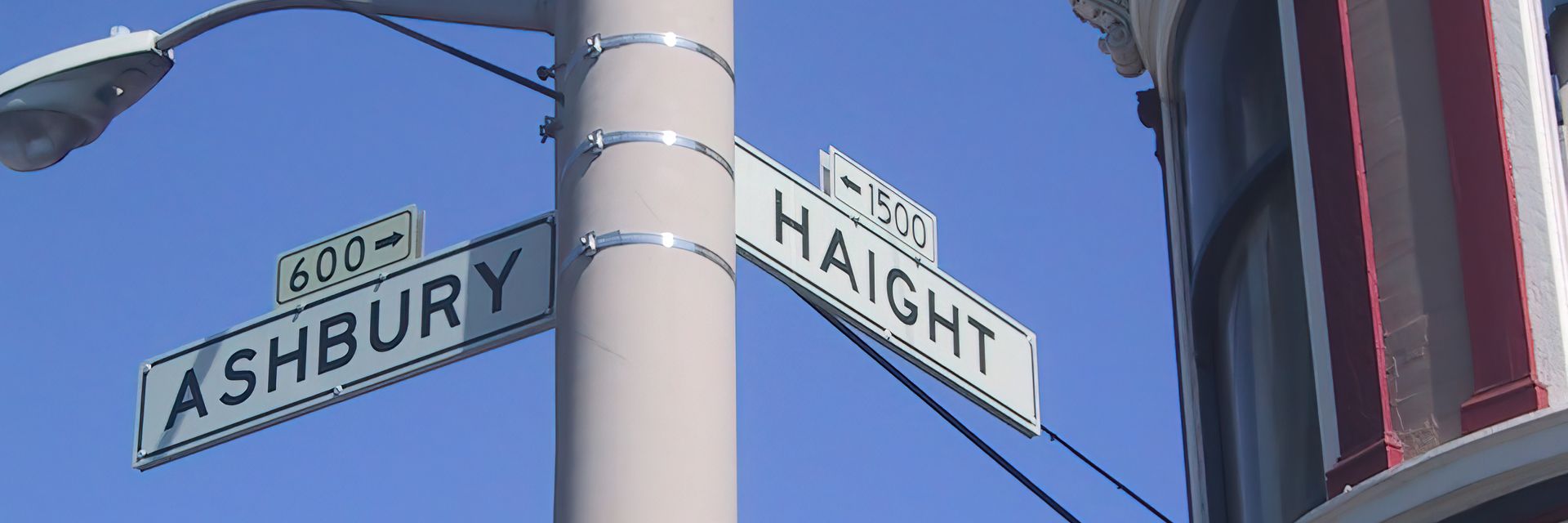San Francisco’s hippies attempted to establish a new, free-for-all economic system during the 1967 Summer of Love. Here’s the incredible story behind why it flowered and how it withered by summer’s end.
◊
In 1967, I was desperate to look as much like a hippie as I could muster. At 14, I needed prescription lenses, and I wanted round wire-rim frames just like my idol John Lennon’s “trippy eyeglasses.” To my dismay, my mother had different ideas. With the collusion of her optician, I ended up with a pair of ugly black plastic frames, just like 1964 Republican presidential aspirant Barry Goldwater’s square spectacles. But I was entranced by the hippie aesthetic, using my allowance to buy a purple “love bead” necklace (“They’re poisonous!” squawked my mom) and a rustic leather watchband.
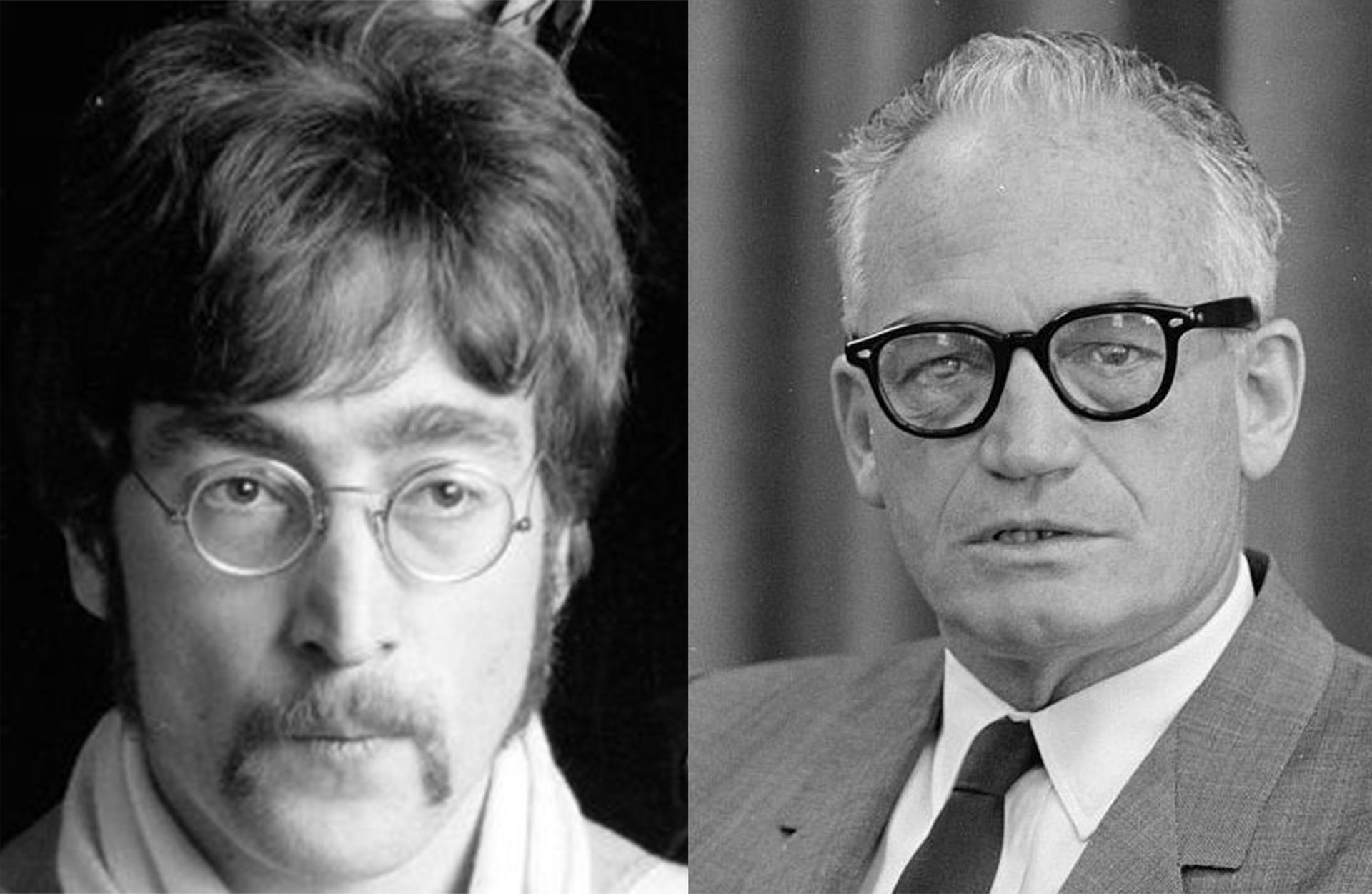
How I wanted to look (l.) vs. how my mother saw me (r.).
(Sources: Public Domain, via Wikimedia [l.]; Marion S. Trikosko, photographer, via Library of Congress [r.])
As far as San Francisco was from my home in Louisville, Kentucky, that’s where I wanted to be. It took 10 years and countless, mostly beneficial, experiences with pot and acid, but I finally made it to the storied home of the hippies. I could only imagine what it must have been like to be there in the neighborhood’s mid-’60s heyday. The Haight-Ashbury district had lost a lot of its charm by 1977, but its siren song called me – and many thousands of my fellow young people across America – to its once-welcoming arms.
The epicenter of all things groovy was that San Franciscan neighborhood, where capacious Victorian homes were once available for cheap rent. The Haight, as it was often abbreviated, was not only a homestead for the burgeoning folk-rock and electric blues bands that were developing a bustling music scene in the wake of the 1964 British Invasion, but also for people who had rejected the 1950s rat race and its competitive, materialistic economy. These folks sought a gentler approach to life and were intent on developing a new, more cooperative – if not communal – economy that prized values beyond the accumulation of wealth.
Before long, these social pioneers would be joined by thousands upon thousands more young seekers in what has come to be known as the “Summer of Love.” In the process, an experimental economy would gain a toehold among participants in the dropout culture. Then, due both to overpopulation within the community and, in no small part, to the depredation of addictive drugs, the whole dream came crashing down. The founders of the movement and its fragile economy declared hippies and the Summer of Love extinct, fleeing the scene and effectively bringing the not-so-long strange trip to its inevitable end.
For more on this deeply transformative period, check out the MagellanTV documentary 1967: Summer of Love.
‘If You’re Going to San Francisco’: Hippies Descend on the City
Estimates from the era suggest as many as 100,000 young people descended upon San Francisco during the 1967 Summer of Love. But questions arose: How would these people be fed? Where would they sleep? And, other than tripping on LSD, what would they do with their time and energy?
San Francisco’s longer-term hippies, the “tuned-in” generation that had been present for the start of the counterculture in the years prior to 1967, had a free-wheeling philosophy they put into practice to care for the well-being of these new masses of wanderers with dilated eyes: They would see to the needs of all the newcomers by providing everything, and for free.
The Philosophy of Free Everything, from Food to Health Care and Beyond
If I could identify the absolute beginning of America’s 1960s counterculture, it would probably be the moment author Ken Kesey gathered a group of friends into a self-styled band of “Merry Pranksters.” They decorated a 1939-vintage school bus in fantastical painted designs and named it Furthur, then set out on a wild cross-country journey in 1964, distributing acid for free everywhere they went.
Kesey, who lived in the Pacific Northwest, had been a participant in a university-sponsored study of LSD’s mind-bending effects. He was so intoxicated with the drug’s potential to change minds, and to improve society, that he was able to secure massive quantities of the drug virtually for free. (Believe it or not, the drug’s manufacturer, Sandoz, supplied it to research institutions at no cost.)
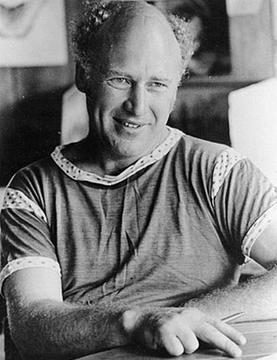
American author and LSD champion Ken Kesey (Source: Wikimedia)
A man of wealth and fame due to his massively successful 1962 novel, One Flew Over the Cuckoo’s Nest, Kesey had attracted scores of young people, beatniks, intellectuals, and hangers-on just looking for the next party. His flash of insight was to take his LSD experiences on the road, beginning with ventures down the West Coast to other oases of ‘turned-on freaks’ to share the gift of group acid trips with them.
Kesey’s trip across the U.S. with the Merry Pranksters is the subject of a masterwork of New Journalism, 1968’s The Electric Kool-Aid Acid Test, by Tom Wolfe.
Kesey’s “Acid Tests” were wildly successful affairs, turning on thousands of young people in Los Angeles, San Francisco, and elsewhere. LSD was an unregulated substance at the time, so the Merry Pranksters mainly operated within the law as they made their way from the West Coast to New York City. There, the bus parked in the borough of Queens so its travelers could enjoy the sights and sounds of the 1964 New York World’s Fair.
The Bay Area, though, was especially welcoming to Kesey and his Merry Pranksters; their unhinged brand of irreverence and anarchy fit in well with hip locals. One of Kesey’s fellow travelers, whose mind had been set free by the psychedelic experience, was the visionary Stewart Brand. He, like Kesey, sought to build a community with altruistic underpinnings. To that end, he and Kesey collaborated on a three-day celebration of the new acid culture held in San Francisco early in January 1966.
Called the Trips Festival, the nighttime celebrations fused music with spectacular light shows and, of course, thousands of doses of freely distributed acid. Another member of the production team was Owsley Stanley, the scion of a wealthy family who was not only a specialist in high-volume sound amplification but also a large-scale synthesizer of LSD, which he gave away by the batch.
Tickets for the Trips Festival cost a mere $2 per evening ($18 in today’s dollars) or $5 for the entire series.
These three ‘ambassadors of acid’ shared a vision of a society free of want, where individuals, with minds set free, could actually live free, liberated to seek their highest aims. Their common viewpoint was enormously influential among their fellow voyagers. And that vision would be put to the test the following year, when some 100,000 more enlightenment seekers descended upon the stomping grounds of Haight-Ashbury to live the vision. The philosophy of “free” was meant to help a small community thrive; but would it be able to accommodate the needs of a populace grown exponentially by the utopian promise of the Haight’s resident hippie colony?
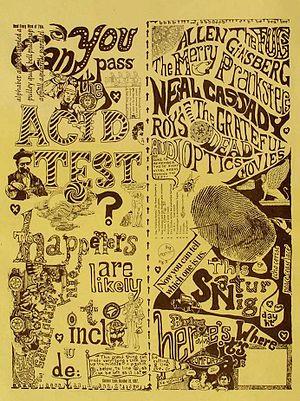
In 1965, Ken Kesey invites fellow “happeners” to an evening of exploration: The Acid Test.
(Source: Public domain, via Wikimedia)
‘Free’ in Action: The Summer of Love’s Real Acid Test
Enter the Diggers. They were a philanthropic action group, an outgrowth of the agit-prop theatrics of the San Francisco Mime Troupe, whose street-based “guerilla theater” aligned with progressive and anti-war causes. The Diggers took their name from a 17th-century community of English utopian thinkers who sought to live entirely divorced from the “treachery” of private property, which included buying and selling goods and services.
The new Diggers were all radical actors possessed of a high-flying vision of an anti-capitalistic community of equals. Their actions were performative and meant to instruct as well as entertain, all while offering genuinely valuable services. They were the force behind the founding of San Francisco’s ground-breaking Haight Ashbury Free Clinic, staffed by volunteers from nearby UCSF Medical School. This clinic, located in the heart of the Haight, had a mission of providing medical and wellness services to anyone without requiring payment. Under the name HealthRIGHT 360, it still offers free services to the community.
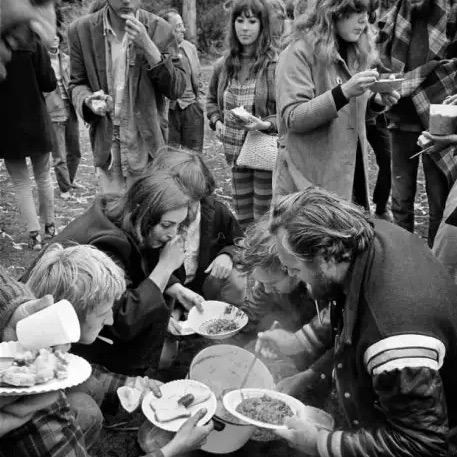
The Diggers distribute stew and bread to the masses in Golden Gate Park, 1967. (Source: Diggerdocs.org)
The Diggers were also behind the practice of providing free food every afternoon in Golden Gate Park. With cast-off but edible food collected daily from the city’s wholesale produce market, the Diggers would make a hearty stew they gave away to whoever showed up with a bowl and a spoon. The stew was supplemented by “Digger bread,” a whole-grain creation baked in coffee cans.
Even distributing free food took on a performance aesthetic for the Diggers, who would cart a literal wooden frame through which recipients had to step to obtain their meals. The Diggers called this the “Free Frame of Reference,” a surreal step from the world of capitalism to the world of free resources.
In addition to food and health care, Diggers set up the “Free Store” in an otherwise unoccupied storefront in the Haight where everything on the premises was free for the taking. Browsers were encouraged to leave what they had to share and take whatever they needed. Even free transportation was a goal. The Diggers provided free travel within the neighborhood, and, upon request, to points beyond the city, using any number of donated cars, trucks, vans, and buses.
Overpopulation and Burnout Take Their Toll
All these services were intended to support the needs of the community. Although the Diggers, if no one else, foresaw the influx of young people to the Haight in 1967, the sheer number of young people and their daily needs for food, clothing, shelter, and transportation overwhelmed the relatively small number of active Diggers. Their main skill set, remember, was acting, not providing community services.
By the end of summer 1967, the Diggers were rapidly tiring of serving the needs of middle-class dropouts whose interest in giving was dwarfed by their appetite for taking. So, members of the Diggers announced they would be conducting a mock funeral for the now-commercialized concept of hippies in a ceremony titled “The Death of Hippie.”
On October 6, 1967, an oversized open “coffin” was paraded down Haight Street filled with hippie paraphernalia: clothing, incense, and such ephemera as posters and underground newspapers. Items were burned along the way to symbolize hippies’ passing, and the funeral cortege paused at the intersection of Haight and Ashbury for a brief “kneel-in” to symbolize and cap off the funereal farewell.
Beatle George Harrison was inspired to visit the hippies of the Haight in August 1967. He was so distraught by what he saw as a waste of youth’s potential that he gave up his interest in taking LSD.
The message could not have been clearer. It was the end of the hippies’ Summer of Love, the end of the Diggers’ social experiments, and even the end (or the transformation) of the Diggers. Soon after, the Diggers reorganized as the “Free Family” to serve the needs of those who had escaped from the Haight and relocated to communes and ‘intentional communities’ in the rural areas surrounding the city. “Free” was dead; long live “free”!
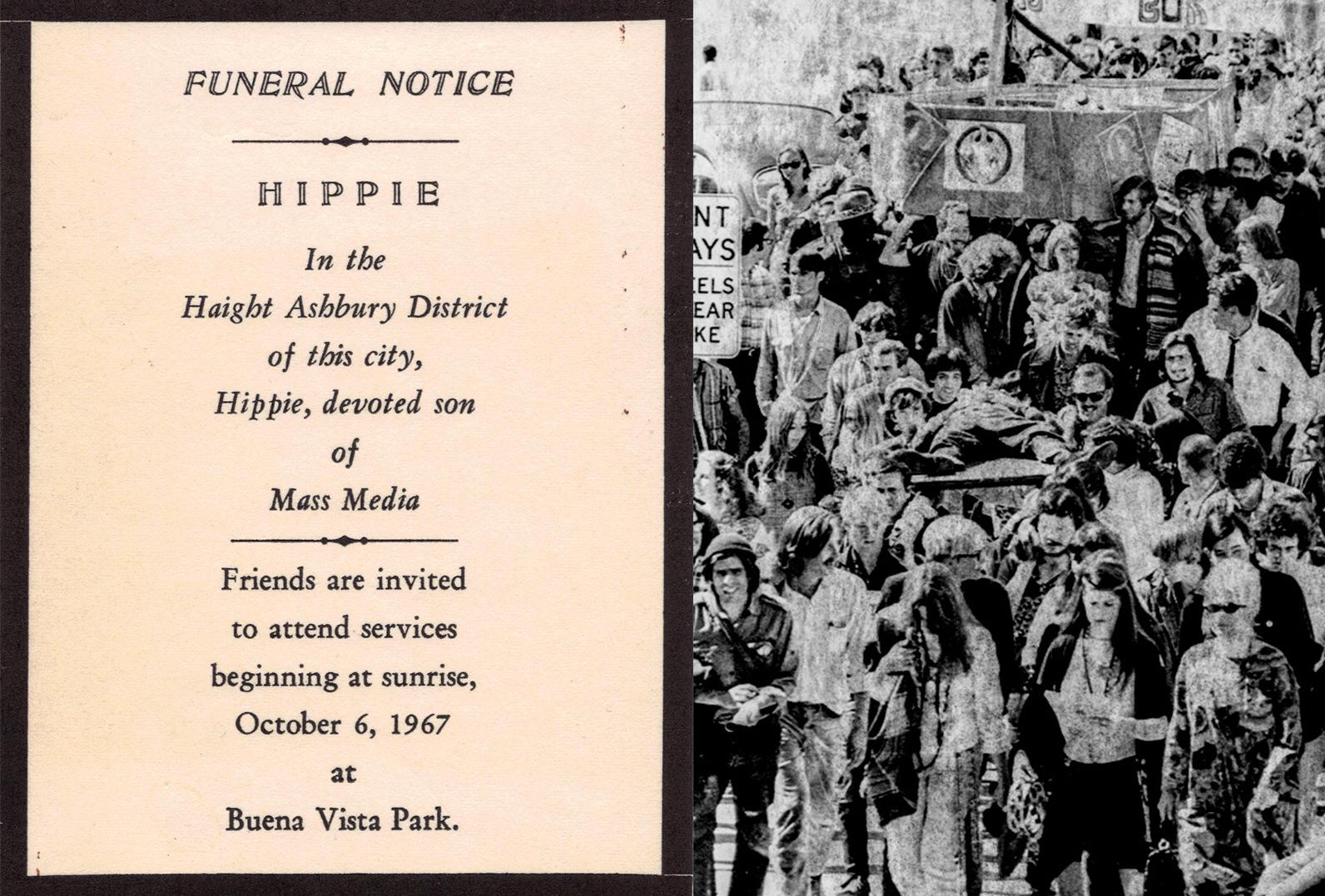
“Death of Hippie” invitation (l.); mock funeral procession (r.) (Sources: Wikimedia [l.]; Diggerfeed.org [r.])
The “Death of Hippie” symbolized a transition point for the city and its hip contingent. The quality of life for hippies in the Haight had eroded. Without basic necessities, there was a rise in homelessness, malnutrition, STDs, and an influx in hard drugs. Amphetamines and opiates, including heroin, took the place of psychedelics for many on the street. Hippie entrepreneurs were replaced by Mob-affiliated pushers, and the scene, like the new drugs, was soon an overwhelming bummer.
The Legacy of the Summer of Love
Despite the dispersal of hippie visionaries and the disappearance of many “free” goods and services for the huddled masses of the Haight, the spirit of hippies has lived on and influenced everything from fashion and design to politics, sex, and even entrepreneurship. Every city and college town had its hippie neighborhood into the 1970s, and these days, hippie attitudes, in a decidedly consumer-capitalist framework, thrive as almost a stage of development for some young people. Like the punk movement, the politics have largely been forgotten while the style, and the music, remain.
If nothing else, hippies affected how we’ve lived in the generations that followed. The broad acceptance of marijuana in the United States is a remnant of hippies’ determination to “live free and high.” Somewhere today I imagine there are other 14-year-olds struggling to break free and express themselves as the “freaks” they know they are. Now, there are avenues in music, media, and more they can explore that were virtually nonexistent back in 1967. You can thank the hippies for that.
Ω
Kevin Martin is Senior Writer for MagellanTV. He writes on various topics, including outer space, the fine arts, and modern history. He has had a long career as a journalist and communications specialist with nonprofit and for-profit organizations. He resides in Glendale, California.
Title image: Street sign at the corner of Haight and Ashbury in San Francisco. (Source: Nancy, via Wikimedia)
